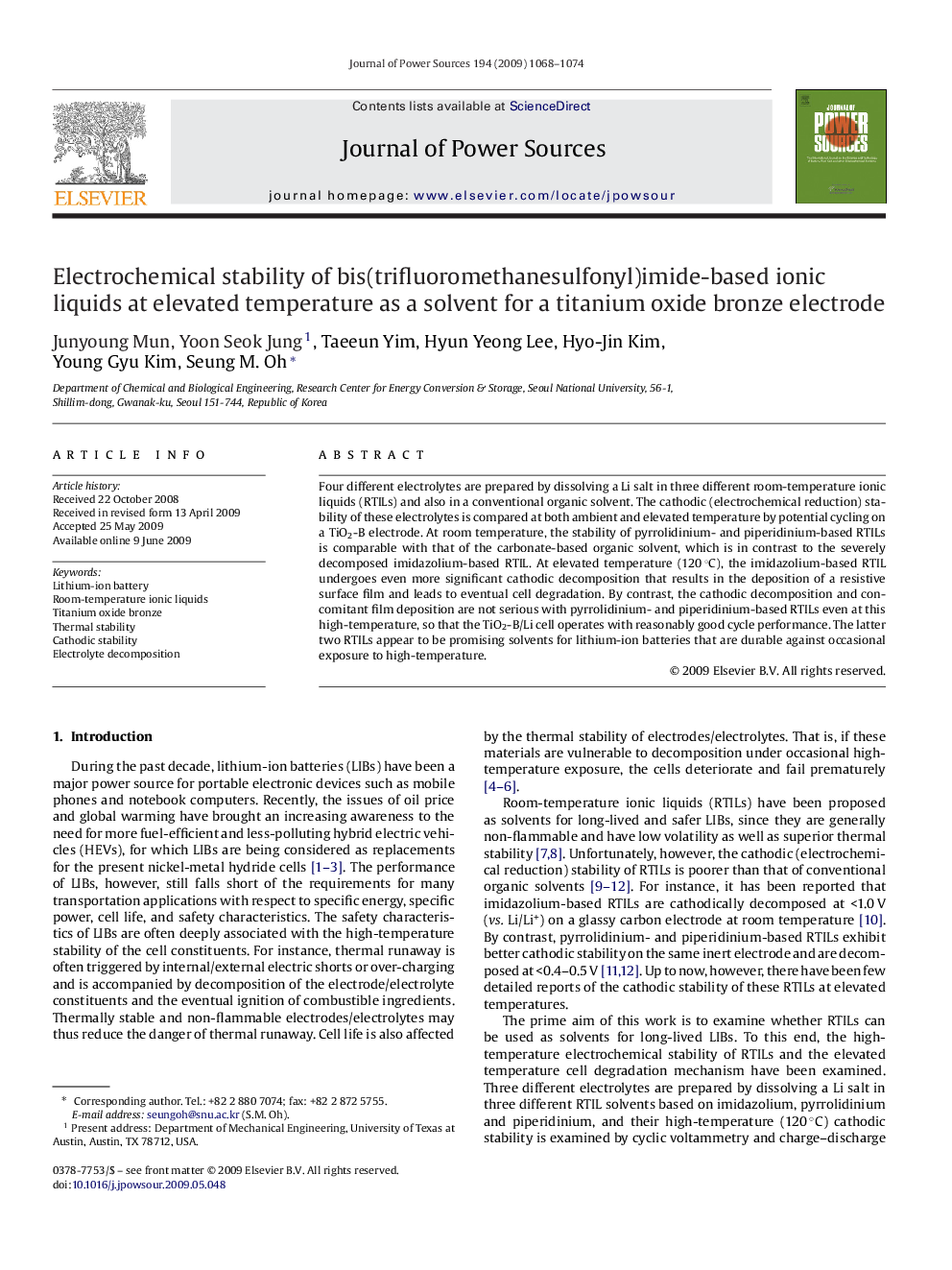| Article ID | Journal | Published Year | Pages | File Type |
|---|---|---|---|---|
| 1294067 | Journal of Power Sources | 2009 | 7 Pages |
Four different electrolytes are prepared by dissolving a Li salt in three different room-temperature ionic liquids (RTILs) and also in a conventional organic solvent. The cathodic (electrochemical reduction) stability of these electrolytes is compared at both ambient and elevated temperature by potential cycling on a TiO2-B electrode. At room temperature, the stability of pyrrolidinium- and piperidinium-based RTILs is comparable with that of the carbonate-based organic solvent, which is in contrast to the severely decomposed imidazolium-based RTIL. At elevated temperature (120 °C), the imidazolium-based RTIL undergoes even more significant cathodic decomposition that results in the deposition of a resistive surface film and leads to eventual cell degradation. By contrast, the cathodic decomposition and concomitant film deposition are not serious with pyrrolidinium- and piperidinium-based RTILs even at this high-temperature, so that the TiO2-B/Li cell operates with reasonably good cycle performance. The latter two RTILs appear to be promising solvents for lithium-ion batteries that are durable against occasional exposure to high-temperature.
